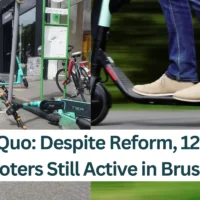Brussels (Brussels Morning) – Approximately 10% of Flemish and federal election candidates have a migration background, down from 11-12% in 2019 due to smaller parties’ withdrawal. Left-leaning parties feature more such candidates, revealing political stances. Despite shifts in migration policies, underrepresentation persists.
Approximately 10 per cent of the candidates for the Flemish and federal elections have a migration background. This is apparent from research by UGent political scientists Bram Wauters, Robin De Vroe and Nicolas Bouteca. They analysed and compared the electoral lists for these elections and those of 2019.
How has the percentage of candidates with migration backgrounds changed since 2019?
The share of candidates with a migration background was slightly higher in 2019, at 11 to 12 per cent. The main explanation for this decline is the withdrawal of a number of smaller parties that mainly focused on an immigrant audience, such as Be.one, D-SA and PV&S. They increased the share considerably in the 2019 elections because no fewer than 75 per cent of their candidates had a migration background.
Why do left-leaning parties have a higher proportion of candidates with migration backgrounds?
In these elections, the researchers found most candidates with a migration background on the left side of the political spectrum. Vooruit, Groen and PVDA place 16 to 17 per cent of candidates with a migration background on their lists. At Vlaams Belang, this concerns only 1.4 per cent of the candidates. For N-VA, the share of candidates with a migration background is 4.4 per cent. Open VLD and CD&V fluctuate around 8 percent.
It is not surprising that there are major differences between left-wing and right-wing parties. “Parties defend certain positions and put forward candidates to promote them,” explains political scientist Bram Wauters. “Parties that are more positive about migration also want to show this on their lists, while parties that are more critical of migration do not focus on this.”
Why do some parties maintain stable numbers of candidates with migration backgrounds?
Although some parties such as CD&V and Vooruit are taking a stricter course on migration than roughly five years ago, this does not translate into a decrease in the number of candidates with a migration background. “You might expect that,” says Wauters. “But all in all, in absolute figures, there is still a limited number of candidates. Parties that are afraid of deterring voters will therefore not advertise themselves as so-called migration parties. There remains an underrepresentation of people with a migration background.”
In most provinces, there are half as many residents with a migration background as there are candidates with a migration background on the list. According to the researchers, there are a number of explanations for this. “Parties usually continue to fish in the same pond,” Wauters explains. “Political parties primarily look at the candidates who were on their lists last time and ask to represent them again.” The number of candidates with a migration background therefore remains reasonably stable, regardless of the disappearance of the so-called migration parties.




